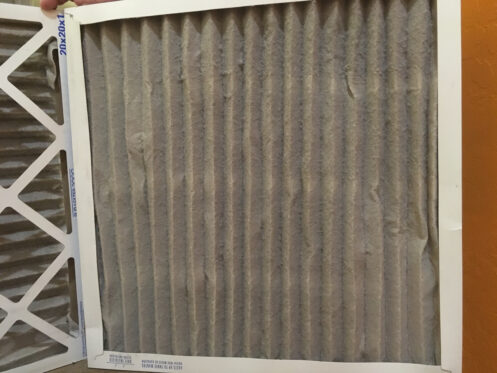Indoor air pollution is a big concern that tends to go unnoticed. Air quality can cause medical issues and affect your comfort levels. Whether you are feeling sick or notice that the air doesn’t seem fresh in your home, you may want to think again about your home’s indoor air quality. Here are a few factors that can cause poor air quality.
Tobacco Smoke
Tobacco smoke is a lethal form of indoor air pollution. It puts the smoker at risk and everyone who shares the same air. The smoke from tobacco products, such as cigarettes, cigars, or pipes, is a mixture of over 7,000 chemicals. There are at least 70 known carcinogens that can initiate or promote cancer development.
The danger of tobacco smoke doesn’t end once the cigarette is extinguished. Residual chemicals can stick to walls, carpets, and furniture. Over time, these residues can react with common indoor pollutants to form new compounds, increasing the toxicity of the indoor environment.
Secondhand smoke exposure is a serious health risk. It can cause cardiovascular disease, reproductive problems, and other diseases. It can even cause health issues in infants and children, including sudden infant death syndrome and respiratory and ear infections.
Cooking Stoves
Cooking stoves are another contributor to indoor air pollution. These types of stoves emit various harmful pollutants into the air, including fine particulate matter (PM2.5), carbon monoxide (CO), and other toxins.
Carbon monoxide is a colorless, odorless gas that can be deadly in high concentrations. It is produced when fuels such as wood or coal do not burn completely. Inhaling carbon monoxide can cause symptoms such as headaches, dizziness, weakness, nausea, and confusion. In severe cases, it can lead to loss of consciousness and death.
In addition to PM2.5 and carbon monoxide, cooking stoves can release other harmful pollutants into the air. For example, burning solid fuels can produce polycyclic aromatic hydrocarbons (PAHs). This is a group of over 100 different chemicals. They are formed during the incomplete burning of coal, oil, gas, wood, garbage, or other organic substances. Some PAHs are carcinogenic.
Cleaning Products
Many cleaning products, including soaps, polishes, and grooming supplies, often include harmful chemicals. These products can release volatile organic compounds (VOCs) into the air during use and even while they’re stored. VOCs are chemicals that vaporize at room temperature. They can react with other chemicals in the air to form harmful by-products.
Exposure to VOCs can lead to both short-term and long-term health effects. In the short term, exposure to these chemicals can cause symptoms that irritate the eyes, throat, and nose.
Long-term exposure to certain VOCs could lead to major health problems like liver or kidney damage. Sometimes, it can cause cancer. Some cleaning supplies can even be flammable or corrosive.
Cleaning supplies and household products containing VOCs and other toxic substances can include aerosol spray products, air fresheners, chlorine bleach, dishwashing liquid, rug and upholstery cleaners, furniture, and floor polish.
Mold
Mold releases spores into the air that can cause allergic reactions and other respiratory issues. It can grow in your home through open doors, windows, vents, and heating and air conditioning systems. Also, mold can be brought indoors on clothing, shoes, bags, and pets.
Mold will grow where there is moisture. Plus, it can develop on paper, cardboard, ceiling tiles, and wood.
Mold exposure can cause many health effects. People with asthma or who are allergic to mold may have severe reactions. Immune-compromised people and people with chronic lung disease may get lung infections from mold.
Building Materials
Often used in constructing and furnishing homes and offices, these materials can release various pollutants into the air. One type of material is known as asbestos. This material can be found in many older homes, especially in insulation.
When this material deteriorates or is disturbed during renovations or repairs, it releases tiny asbestos fibers into the air. Inhaling these fibers can lead to serious health problems, including lung disease and cancer.
Upholstery and carpeting are other potential sources of indoor air pollutants. Like flooring, these materials can emit VOCs. Some carpets also contain synthetic fibers that can release toxic gases.
Biological Pollutants
These pollutants are or were living organisms. Over time, they can degrade indoor air quality. They include dust mites, pet dander, and pollen.
Dust mites are tiny creatures that live in house dust. They feed on flakes of shed human skin and flourish in homes. Dust mites produce waste products that can trigger allergic reactions and asthma attacks.
Pet dander can also lead to indoor air pollution. These allergens often cause an allergic reaction or trigger asthma symptoms in some people. Pet allergens may be brought into the home from people’s clothing, even in homes without pets.
Pollen is another common biological pollutant. It originates from plants and can be brought indoors on people and pets, through open windows and doors, or by the wind. Pollen is a common allergen and can cause allergic rhinitis, also known as hay fever.
Biological pollutants can travel through the air and are often invisible. They enable poor indoor air quality.
Inadequate Ventilation
When ventilation is inadequate, pollutants can become trapped indoors. In turn, that leads to contaminants in the air.
Ventilation is the process of exchanging indoor air with outdoor air. It helps to remove or dilute indoor airborne pollutants coming from various sources. This process maintains good indoor air quality and a healthy living environment.
However, when ventilation is insufficient, it can increase the concentration of airborne pollutants. Poor ventilation can also result in moisture build-up and mold growth. High humidity levels encourage the growth of mold and dust mites. As a result, that causes allergies and other health problems.
E-Cigarettes and Vaping
E-cigarettes and vaping devices have surged in popularity in recent years. While they are often marketed as safer alternatives to traditional cigarettes, they emit harmful chemicals into the air indoors.
E-cigarettes work by heating a liquid that contains nicotine and other chemicals. When the user inhales, this liquid is vaporized, creating an aerosol. This vapor aerosol contains several potentially harmful chemicals.
One of the biggest pollutants emitted by e-cigarettes is nicotine. Nicotine is not only addictive but also a toxic substance. It can raise blood pressure and spike adrenaline and heart rate. That could increase the likelihood of a heart attack.
E-cigarette aerosols contain other harmful substances, including heavy metals like lead, volatile organic compounds, and cancer-causing agents. Even though e-cigarette aerosols typically contain fewer toxic chemicals than traditional cigarettes, they are not harmless water vapor. They can degrade indoor air quality.
At Cozy Home Services, our mission is to ensure that every room in your Vacaville, CA, home has the optimal indoor air quality you need. Various factors can affect the air quality in your home. With our experience and dedication, we can create a comfortable environment for you and your family. We offer a comprehensive range of HVAC services, including installation, maintenance, and repair. Don’t let poor air quality disrupt your home. Reach out to us at Cozy Home Services today!



